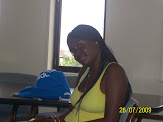Paris is back, again ^_^
Today we will be reporting some data that we had collected while we were out and about on campus. In a previous week we had went out and tallied the number of bikes compared to bike racks. We grouped the racks according to which building they were closest to. After a long day of counting we came up with a spreadsheet containing our data, which we turned into percentages. The data showed what buildings got bike traffic and which ones different. Our assignment for the day was to shed some light onto why some buildings got traffic and some didn't.
Of the thirteen locations we recorded along our path, the College of Engineering technically had the highest bike traffic, with a ridiculous 150%. How did we come up with 150%?, simple. There happened to be more bikes than there were spaces in the bike racks. When the open spaces were filled, people chained up their bikes to the rack any way they could. It definitely looked crowded. The actual highest bike count goes to Tyler Hall, which had a well rounded 100% usage. Every single slot was used up on each of Tyler's three full and two half racks. I figure that because the building was relatively new and fresh, people flocked to it. I think that's a pretty reasonable assumption, because when we were there the landscape was littered with college students on lunch and socializing.
After Tyler the numbers just get bleaker and bleaker. From Weiss Hall's 75% usage and Payley's 59% all the way down to Gladfelter, with just under 20%, and Beury Hall which crapped out at 0%. The numbers are all over the chart, but theres a simple explaination for all of them: Location. Depending on how close a building was to the "heart" of campus its rack usage either increased or decreased. Also, the placement of the bike racks made a difference. At some of the places the racks are nearly hidden, so nobody uses them.
I think awareness about the bike racks is a major issue, and we'll see what we can do to about it our future endeavours.
Today we will be reporting some data that we had collected while we were out and about on campus. In a previous week we had went out and tallied the number of bikes compared to bike racks. We grouped the racks according to which building they were closest to. After a long day of counting we came up with a spreadsheet containing our data, which we turned into percentages. The data showed what buildings got bike traffic and which ones different. Our assignment for the day was to shed some light onto why some buildings got traffic and some didn't.
Of the thirteen locations we recorded along our path, the College of Engineering technically had the highest bike traffic, with a ridiculous 150%. How did we come up with 150%?, simple. There happened to be more bikes than there were spaces in the bike racks. When the open spaces were filled, people chained up their bikes to the rack any way they could. It definitely looked crowded. The actual highest bike count goes to Tyler Hall, which had a well rounded 100% usage. Every single slot was used up on each of Tyler's three full and two half racks. I figure that because the building was relatively new and fresh, people flocked to it. I think that's a pretty reasonable assumption, because when we were there the landscape was littered with college students on lunch and socializing.
After Tyler the numbers just get bleaker and bleaker. From Weiss Hall's 75% usage and Payley's 59% all the way down to Gladfelter, with just under 20%, and Beury Hall which crapped out at 0%. The numbers are all over the chart, but theres a simple explaination for all of them: Location. Depending on how close a building was to the "heart" of campus its rack usage either increased or decreased. Also, the placement of the bike racks made a difference. At some of the places the racks are nearly hidden, so nobody uses them.
I think awareness about the bike racks is a major issue, and we'll see what we can do to about it our future endeavours.






